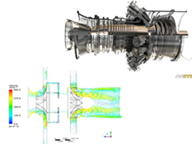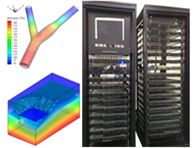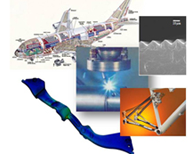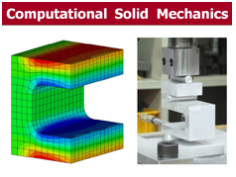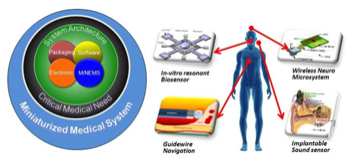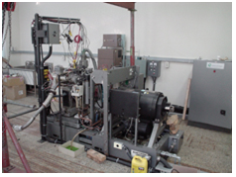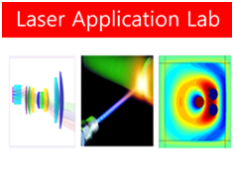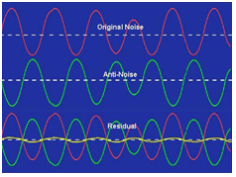Smart Structures Lab (Prof. Dae-Hyun Kim)

- The Smart Structures laboratory has studied the "Smart or Intelligent Structures" that correspond to the changes of external environment by themselves. The smart structures detect the influence of the external environment and changes of the internal structural state at the same time.
- In detail, our laboratory has been concentrated on "Structural Health Monitoring," which detects the damage of smart structures caused by the influence of the external environment under the smart structure study. Also, our laboratory has mainly researched fiber optic sensors and piezoelectric sensors as smart sensors.
- By applying a smart sensor such as a fiber optic sensor, we have studied the various measurements such as displacement, strain, acceleration, etc. Also, our laboratory has conducted the techniques of signal processing to find out the characteristics of a signal that is acquired by the various sensors such as fiber optic sensors and piezoelectric sensors.
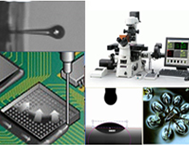
- The main research topic of the Micro Interfacial Flow and Visualization Laboratory (MIFVL) is to investigate micro flows with interface and to develop visualization techniques for various applications based on particle image velocimetry (PIV). There are many kinds of interfacial flows such as capillary meniscus, micro droplet interface, and nano bubble. It is important to understand the physical phenomena of micro interfacial flow in order to design micro fluidic systems. The present laboratory focuses on how to visualize and analyze the interfacial phenomena for industrial-oriented applications. By expanding the previous PIV technology, micro PIV, two-phase PIV as well as stereoscopic PIV have been developed and applied to various fluid flows such as the interface of gas explosion flames, partially-filled open channel flow, 3D flow inside a spark ignition engine ,and a turbo machinery. Recently, capillary underfill flow in flip-chip packaging, piezoelectric inkjet nozzle, nano bubble generator for dental clinic and micro heat pipe have been the main issues of the present laboratory.
Heat Transfer Laboratory (Prof. Sangjo Han)
- The Heat Transfer Lab forces its research on the field of energy system cycle analysis and power generation turbine design/analysis. In addition, HTL conducts research to improve RTP equipment design in semiconductor facilities. Besides industrial applications, HTL has been done fundamental research in heat and mass transfer analysis. The knowledge of heat and mass transfer analysis will improve performance and efficiency in turbo machinery. A new interest is the DLP 3D printer. It uses a DLP optical system to make 3D printouts.
Computational Fluid Dynamics Laboratory (Prof. Hyoung-Gwon Choi)
- In CFD (Computational Fluid Dynamics) Lab at SeoulTech, various engineering problems related to heat transfer and fluid dynamics are investigated using both commercial codes and a finite element code developed by Professor Hyoung-Gwon Choi over about the last ten years.
- The Intelligent Manufacturing and Smart Materials Laboratory houses a multi-disciplinary team of researchers working on a variety of projects to achieve innovation in materials and manufacturing processes.Our research focus of materials and manufacturing, covering 1) Micro/nano-scale precision manufacturing processes including 3D printing, laser processing, micro-forming and machining, and nano imprinting. 2) Design/Simulation/Optimization based on CAD/CAM/CAPP and intelligent/virtual manufacturing systems, and 3) Design/Implementation/Reliability analysis of composite, CNT, bio-compatible, and functionally graded materials.
- The research in our laboratory is focused on computational solid mechanics related to elasticity, plasticity, and failure behaviors of solids. Finite elements, special purpose elements and molecular dynamics are used and developed to analyze mechanical behaviors of materials. Computational solid mechanics research involves the development of a new methodology and a hybrid method of numerical analyses and experiments.
Miniaturized Medical Systems Laboratory (Prof. Woo-Tae Park)
- Our group’s goal is to develop novel micro/nano fabrication technology for biomedical and environmental applications. To facilitate the application to biomedical applications, we are collaborating with medical research groups and hospitals. Current research areas are “Nanostructure fabrication using electro-hydro-dynamic jets,” “Flexible optogeneticneuroprobes,” and “3D electronic packaging.” Our lab has international research collaboration with Singapore and USA as well as with government research centers such as KIST and KIMM.
Environment-Friendly Combustion Laboratory (Prof. Chan Jun Park, Prof. In-Yong Ohm)
- In this environment-friendly combustion lab, we conduct an in-depth study regarding thermal systems and internal combustion engines. Besides studying the improvement of engine and thermal system efficiency, this lab conducts research not only on controlling and purifying pollutants, which are generated during the combustion process, but also on reducing the emission of carbon dioxide, which is one of the global warming materials. Our core research objects fall into these themes: Experimental analysis of in-cylinder flow of the engine for improvement of engine efficiency; study of fuel system for alternative fuel and its performance characteristics; research on low-fuel-consumption engines.
Neuro Robotics Laboratory (Prof. Jinhyun Kim)
- In our laboratory, a diversity of robotics research is conducted for use in industry and for human-beings. In particular, our laboratory concentrates on underwater robotic system design, analysis and, control. We have developed a highly maneuverable autonomous underwater vehicle, underwater cleaning robots for ship hulls and indoor pool applications, and a novel underwater localization system using electromagnetic signal strength. Also, robust position and velocity tracking control algorithms are one of the main focuses of our laboratory.
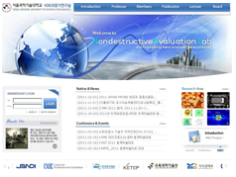
- Opened in spring of 1995, we formed an organic relationship with local and foreign cooperative institutions such as The Pennsylvania State University in the U.S. and Tokyo Institute of Technology in Japan in the field of advanced intelligent nondestructive measurement, diagnosis and expert system development, and Nondestructive Evaluation (NDE). This laboratory is striving for the studies on the intelligence and standardization of quantitative NDE technique that is an element technology necessary for Engineering Nanostructure Characterization and Structural Health Monitoring and Diagnostics, with professor Ik-Keun Park as the leader. If there is any person who is curious to know about our laboratory or wants to consult us on an area related with nondestructive evaluation, please inquire at a bulletin board, visitor’s book, or through e-mail (ikpark@seoultech.ac.kr), or at the Nondestructive Evaluation Lab. (+82-2-970-6944; Research assistant: Taesung Park) of Seoul National University of Science & Technology.
Laser Application Laboratory (Prof. Chul Ku Lee, Prof. Joohan Kim)
- Our lab carries out research on laser application engineering, laser material processing, and precision welding processes. We have laser-related equipment such as a Nd:Yag laser, other optical devices, and welding equipment. SEM, TEM, AFM can be also applied to our research.
Noise and Vibration Control Laboratory (Prof. Dong Hoon Lee)
 Introduction
Introduction
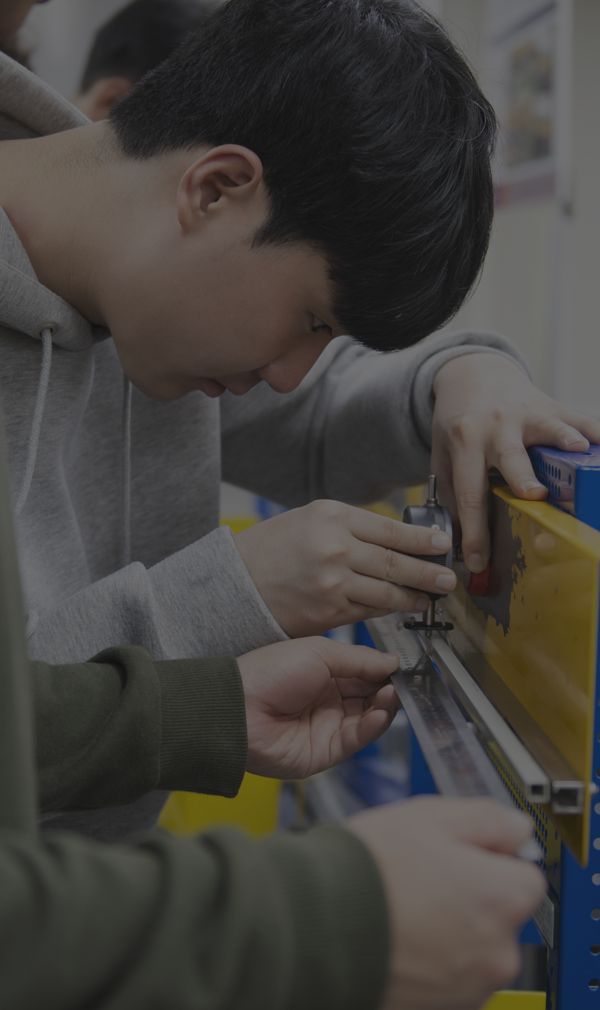 People
People
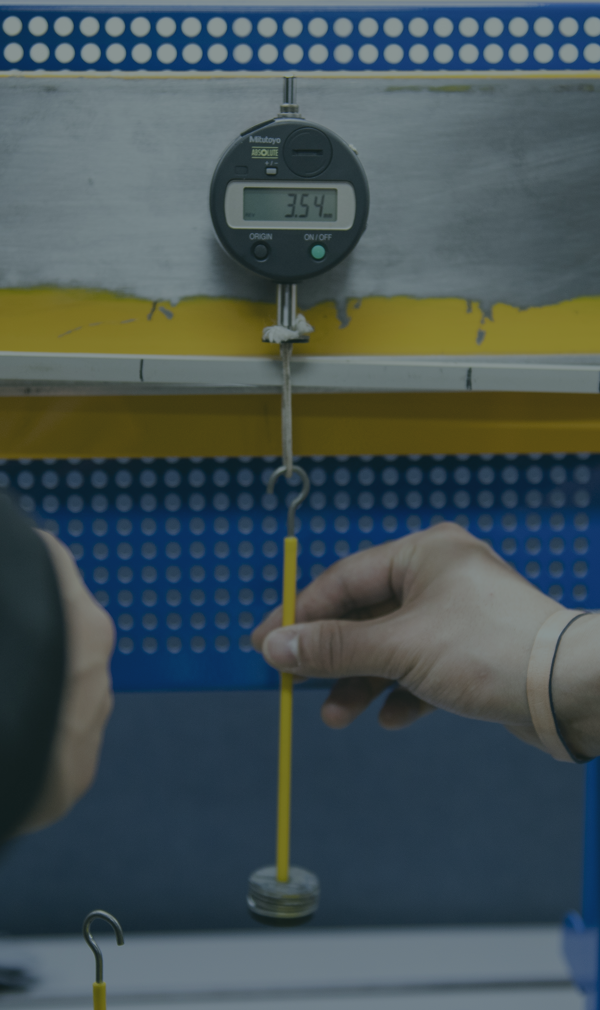 Curriculum
Curriculum


